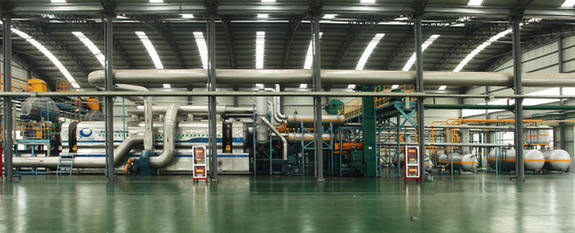Free Trade for the Future
Today, economic globalization has entered into an era of global value chains, trade and investment between APEC economies, and production networks in the Asia-Pacific region have become an important part of the global value chains, said spokesman Shen Danyang in an interview with Chinese media outlets.
The scope of trade has been not limited to goods, as service is accounting for an increasing proportion in trade of many developed economies. Moreover, trade has been more and more complicated to calculate because many economies are likely to be involved in a product from its design to production and sale, according to Shen Danyang.
He took the iPhone as an example to showcase the complexity of trade: The operating system is designed in the United States, its chip is produced in Japan, some components are produced in South Korea, and it is assembled in China and exported to the rest of the world.
"In the past, the large trade surplus came with large income. But it is less so today. The global value chain includes trade, service and investment. The measurement is helpful for economies to know its position in the global value chain," he said.
China has long been called the world's factory, and the large scale of trade often makes China a target for trade disputes. Shen Danyang pointed out, with measurements of the global value chain, it will be easy to find that China's trade surplus in fact does not really belong to it.
In addition, supply chain management is a new task for APEC in recent years. The production and trade chain between Asia-Pacific economies has reached a high level of integration. If the supply chain cannot be improved, it will bottleneck regional economic development, Wang from the CIIS said.
With the two framework agreements, APEC hopes to establish a cooperation mechanism on global value chains and promote it to the rest of the world, Wang said.
Promoting connectivity
Developing the Blueprint for Connectivity is a major task for this year's AELM, China's APEC senior official Tan Jian said at the APEC Studies Center Consortium Conference on May 11 in Qingdao.
Connectivity has three pillars: physical or hard connectivity, which includes transport (land, maritime and air), telecommunications and information and communication technology, and energy infrastructure; institutional or soft connectivity, which includes customs, supply chains, financial spheres, regulatory coherence and structural reform; and people-to-people connectivity, which includes business mobility, student and researcher mobility, tourism facilitation, labor and professional mobility, and cross-border education.
The blueprint will address the achievements and challenges to connectivity in this region, key initiatives for enhanced APEC connectivity and strategies for implementation.
Wang said that promoting connectivity is a task on which APEC member economies have continued to exert efforts.
In terms of people-to-people connectivity, for example, APEC developed a Business Travel Card several years ago. Holders of the card can travel visa-free between APEC member economies. It is expected to expand to other groups of people in the future, Wang said.
The proposal to strengthen connectivity, especially in terms of infrastructure investment, is greatly needed by many developing economies in the Asia-Pacific region. China has been making efforts to implement this proposal, Shen Minghui said.
According to the Asian Development Bank, $8 trillion will be needed in 2010-20 for Asian economies' infrastructure development. And according to the World Bank and the Organization for Economic Cooperation and Development, $55 trillion will be needed for global infrastructure development by 2030.
The multiple benefits of infrastructure construction are clear. However, promoting trade and investment, growing the economy, creating jobs and reducing poverty are harder to implement in many developing Asian economies. There are some principal bottlenecks, such as a lack of financing, and the return on investment is low while risks are high, Shen Minghui said.
On October 24, 21 Asian countries signed the Memorandum of Understanding on Establishing the Asian Infrastructure Investment Bank (AIIB) in Beijing.
The 21 AIIB founding members are Bangladesh, Brunei, Cambodia, China, India, Kazakhstan, Kuwait, Laos, Malaysia, Mongolia, Myanmar, Nepal, Oman, Pakistan, the Philippines, Qatar, Singapore, Sri Lanka, Thailand, Uzbekistan and Viet Nam.

